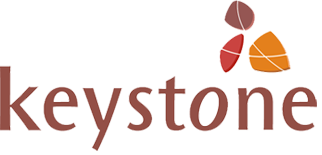 It is inconceivable today that a disaster like Typhoon Haiyan could hit without a rush to deploy specialist accountability staff and the issuance of guidance about how to include beneficiaries in the way the relief program is designed. This is progress but it is premature to claim victory. Rather, we need to make sure the humanitarian horse actually drinks the water of beneficiary accountability.
It is inconceivable today that a disaster like Typhoon Haiyan could hit without a rush to deploy specialist accountability staff and the issuance of guidance about how to include beneficiaries in the way the relief program is designed. This is progress but it is premature to claim victory. Rather, we need to make sure the humanitarian horse actually drinks the water of beneficiary accountability.
Rigorous standards and smart methodologies are not enough on their own. If the measure was the number of initiatives launched since the Sphere Project was set up in 1997, accountability to affected populations would already be front and center in humanitarian work. But it is not
Humanitarian planning and coordination provide few handholds to pull the agenda forward. Relief workers are mostly too busy running their programs and coordinating with one another to focus in a systematic way on managing to the perceptions of their beneficiaries. Few aid agencies give their staff brownie points for championing accountability to populations affected by humanitarian disasters – and there are no sanctions for failing to do so.
Operational agencies can be maddeningly slow to pick up on these things. But it is time to shift our attention inward and to take a hard look at how we in the so-called quality and accountability community go about promoting an agenda we all hold dear. It is no longer about inventing the wheel. A huge but under-acknowledged achievement is that we have edged our ad hoc way towards an accountability architecture that can actually deliver on its goals. Where we have fallen short is showing how the various pieces work together and provide a service that is more than the sum of the parts.
What is needed is practical collaboration in the field — not in small pilot projects but at scale across whole humanitarian programs for extended periods of time. Until we show concretely how the accountability community can come together and deliver on this agenda we will fail the very people we hope to serve.
It is time to improve our game by demonstrating, for example, how the Humanitarian Accountability Partnership, with its clear standard, committed members and smart practice, can work alongside experts from the Communications with Disaster Affected Communities network and the ‘practical listeners’ at the CDA Listening Project to complement Ground Truth’s light touch survey methodology that lands beneficiary perspectives in the management of humanitarian programmes.
There are many other permutations to this line up of actors, but the point is clear: the name of the game must be collaboration unless we want to risk another decade of struggle in the trenches of accountability to crisis-affected people.
The response to Typhoon Haiyan underlines the need for all organizations trying to improve the quality and accountability of the humanitarian response to bring together their collective experience and align their complementary skills. We have the knowledge and the capacity, now we need to prove we can deliver on the promise of an agenda that has yet to reach lift-off.
Nick van Praag directs the Ground Truth programme and leads Keystone’s work in the humanitarian space with the support of the Swiss Agency for Development and Cooperation, the IKEA Foundation and the Conrad Hilton Foundation.
